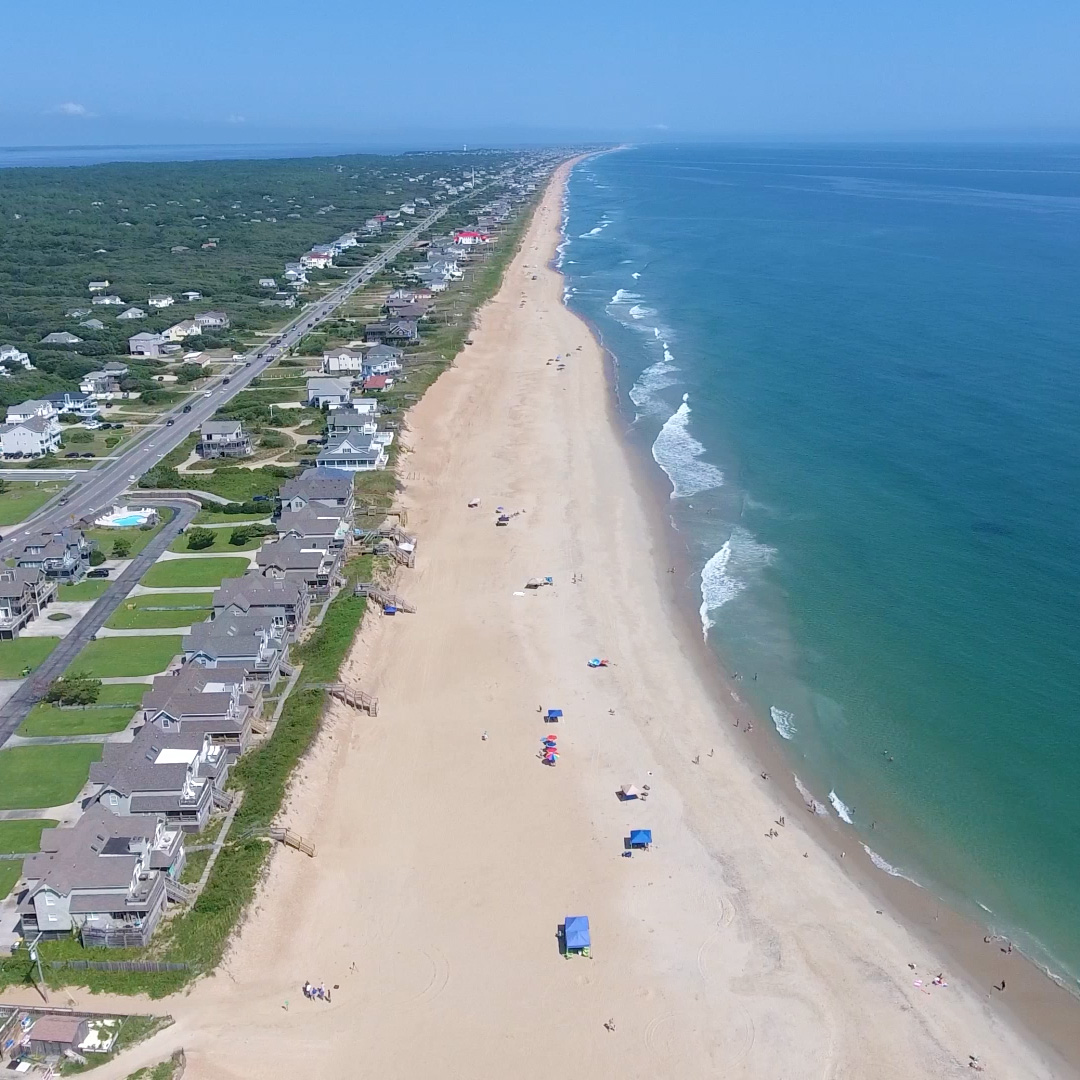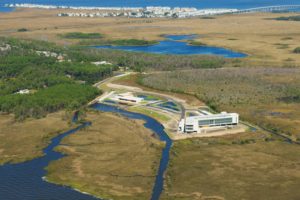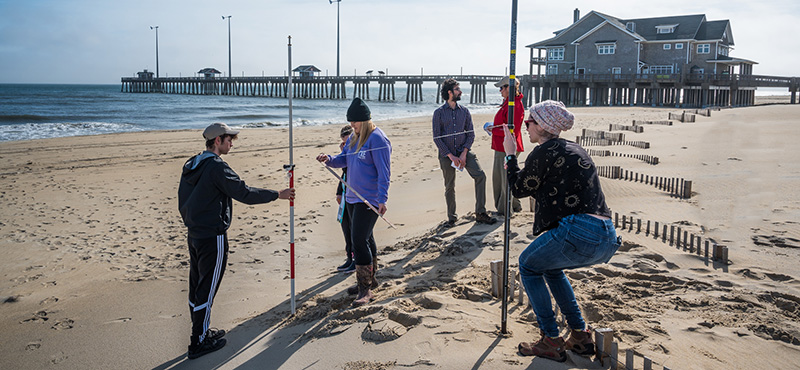Marine Fisheries Ecology
Research Lab Overview
Marine ecosystems are experiencing impacts from a changing climate, fishing, and increasing human populations on the coast. Our research is aimed at understanding the impacts of these pressures on biological communities, so marine resources can be sustainably managed. A majority of our work is developed in coordination with state or federal fisheries managers, or with stakeholders, in order to produce policy-relevant results.
We use two major approaches: 1) using existing long-term biological survey data and environmental data to model species habitat use and distribution, which can be used to understand historic trends and also to predict future impacts; and 2) conducting field-intensive investigations to collect novel data on species life history or habitat function.
Contact Information:
James W. Morley
Assistant Professor
Department of Biology
East Carolina University
Coastal Studies Institute
252-475-5454
morleyj19@ecu.edu

Current and Recent Research Projects

Do oyster aquaculture farms function as good fisheries habitat?
Oyster farms occur in estuaries and displace natural habitats. This industry is on the rise in the U.S. and so it is important to understand the change in habitat function when an area is leased for culturing oysters. We are examining how fish and invertebrates use oyster farms in multiple ways. Including a survey of fish abundance and species composition on oyster farms across North Carolina, and comparing them to nearby control areas. Also, we are examining fine-scale movements of fish within an estuarine landscape that includes an oyster farm, by using acoustic telemetry tags that are implanted into juvenile fish and tracked for two months.

Reproductive life history of sheepshead (Archosargus probatocephalus) in North Carolina
Sheepshead are an economically important species in the southeast U.S. Little is known about the life history of this species. For instance, it is uncertain if specific life stages might be vulnerable to fisheries exploitation, or if nursery habitat availability limits population growth. For effective management, an understanding of adult spawning patterns and juvenile recruitment dynamics is critical because these factors govern population growth. This project is a field-intensive study and we are collecting novel data on where and when adult sheepshead aggregate to spawn during the spring. Also, we are sampling juvenile sheepshead to determine their timing of recruitment, habitat use, and hatch dates in multiple areas across NC. Ultimately, this will provide an understanding of the connectivity between sheepshead spawning grounds and nursery habitats.

The influence of climate variability and nursery habitat quality on penaeid shrimp recruitment
Penaeid shrimp, including brown and white shrimp, are of great economic and ecological importance to North Carolina. Shrimp have a complex life history and annual abundance is highly variable. This variation is primarily due to year-to-year differences in climate and weather patterns, but there is a poor understanding of what specific factors influence shrimp recruitment. Using long term biological survey data and environmental data, we are using statistical models to elucidate the dynamics of shrimp recruitment in Pamlico Sound and other areas of NC. Predictive models will be used both to project future climate impacts on shrimp and also to develop a forecasting tool for the NC shrimp fishery.

Projecting future shifts in habitat for marine species as a result of climate change
Climate change is altering the geographic distribution of suitable habitat for marine species. These shifts are challenging fisheries management, which is based on the assumption that fish stocks are static over the long term. We conduct research to help fisheries managers anticipate changes in store for the 21st century. We have refined a method to forecast the future geographic distribution of species habitat on the North American continental shelf, based on niche models that describe species’ preferred temperatures and seafloor features. Presently, we are working towards a product that will rank the climate change vulnerability of economically important fisheries in all regions of the U.S. coast.
Lab News
Researchers Share Updates on National Shrimp Day
These days it seems there is a particular day devoted to celebrating almost anything that comes to mind. While some holidays, like the recent observance of Mother’s Day, are widely recognized, today’s event is likely more obscure to most, though no less relevant to us...
Meet the Scientist, Episode 4 Premieres March 25
Have you ever wondered what it takes to be a scientist? Or are you curious about what research takes place on the ECU Outer Banks Campus? If you answered “YES!” to either of these questions, you should tune in to our monthly, live-streamed video series Meet the...
Oyster Reefs and the Law of Attraction
If fish could provide a review of an oyster reef, it might go something like this:Great eats! For starters, there was a tasty and plentiful smorgasbord of barnacles, mussels, and crabs. Arrived just before high tide and the ambush action was off the chart! I’m talking...
Impacts of Oyster Leases in North Carolina Estuarine Systems: Habitat Creation through Sustainable Aquaculture
Written by Lauren Colonair.In January of 2020, Dr. Jim Morley, an Assistant Professor in the Department of Biology at East Carolina University, joined CSI as an Assistant Scientist. Morley brings unique and exciting perspectives to the team, as he is currently the...
Intern Adventures at Cedar Island: A Day at Dr. Morley’s Field Site
Written by Lauren Colonair.Dr. Jim Morley, one of the newest researchers at CSI, is working on many interesting projects through Morley Marine Fisheries Ecology Lab. Morley’s research is a mix of ecological modeling and fieldwork, with a focus on...
CSI Biologist Awarded Funding for Fisheries and Climate Change Work
With climate change at the forefront of environmental issues, one of the notable changes has been the rising temperature in our ocean waters which has resulted in the displacement of many marine species. Some species have been able to adapt, while others may be left...
Jim Morley Brings Shrimp and Sheepshead Studies to CSI
Jim Morley, a new assistant scientist at CSI and assistant professor in the Department of Biology at ECU, is excitedly anticipating all the possibilities of the work to come here at the Coastal Studies Institute on the ECU Outer Banks Campus. While his work has been...
Faculty Spotlight: Jim Morley
College elective courses don’t typically alter the trajectory of a person’s life, but in James (Jim) Morley’s case they did. While an undergrad at the State University of New York at Cortland, needing to fulfill his electives requirement, he randomly chose a couple of...
Related Research Focus Areas

Marine
&
Coastal Ecosystems

Coasts
&
People











 Based at the Coastal Studies Institute (CSI), the North Carolina Renewable Ocean Energy Program (NCROEP) advances inter-disciplinary marine energy solutions across UNC System partner colleges of engineering at NC State University, UNC Charlotte, and NC A&T University. Click on the links below for more information.
Based at the Coastal Studies Institute (CSI), the North Carolina Renewable Ocean Energy Program (NCROEP) advances inter-disciplinary marine energy solutions across UNC System partner colleges of engineering at NC State University, UNC Charlotte, and NC A&T University. Click on the links below for more information. ECU's Integrated Coastal Programs (ECU ICP) is a leader in coastal and marine research, education, and engagement. ECU ICP includes the Coastal Studies Institute, ECU's Department of Coastal Studies, and ECU Diving and Water Safety.
ECU's Integrated Coastal Programs (ECU ICP) is a leader in coastal and marine research, education, and engagement. ECU ICP includes the Coastal Studies Institute, ECU's Department of Coastal Studies, and ECU Diving and Water Safety. The ECU Outer Banks campus is home to the Coastal Studies Institute.
The ECU Outer Banks campus is home to the Coastal Studies Institute.

